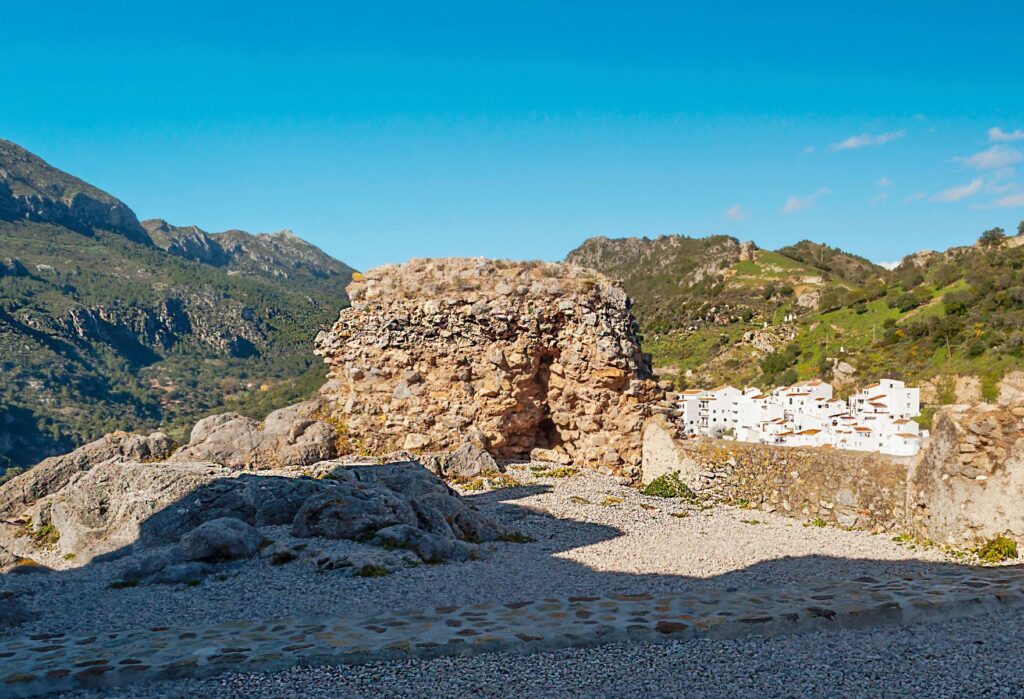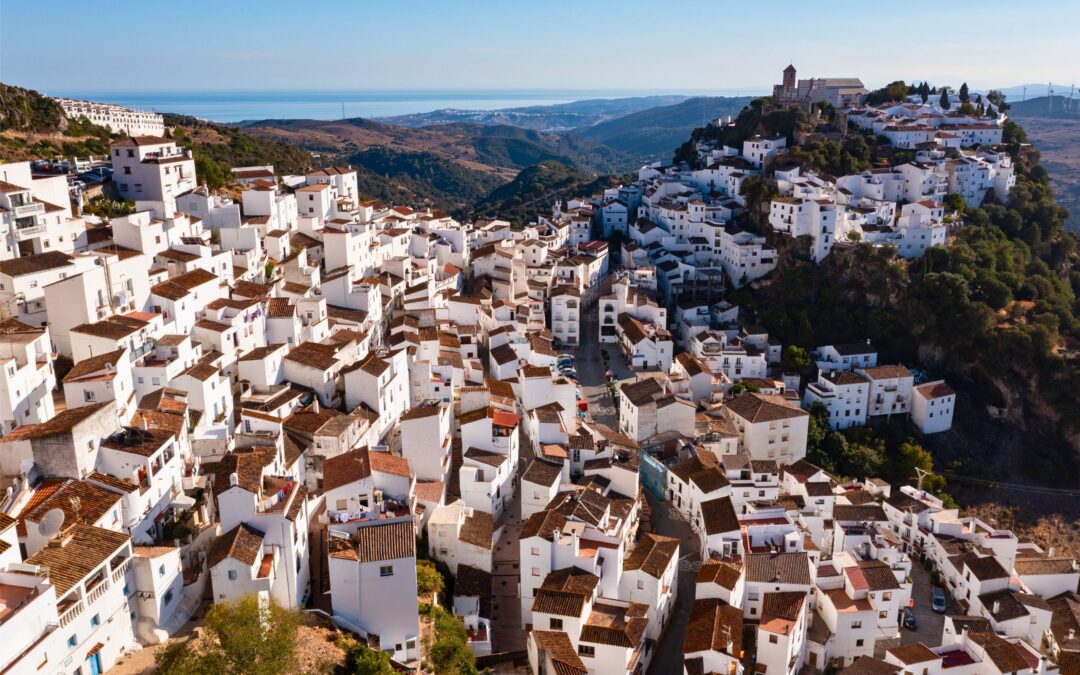Some of Casares’ remote mountain paths were once used for smuggling during the Spanish Civil War and Franco era. Today, these same routes have been rebranded as hiking trails with panoramic views and hidden historical markers.
There are towns you visit and forget, and then there’s Casares—a village that stays with you because it refuses to be repackaged. It sits suspended between sea and mountain, whitewashed like a film set, except it’s real. Properly real. Not staged or softened for tourism. It offers what most of the Costa del Sol doesn’t even attempt anymore: a sense of time that stretches back and isn’t in a rush to catch up.
In 2025, Casares has managed something rare. It’s kept its integrity intact. It’s one of the few places on the coast where you can still walk medieval roads in the morning, then have local goat’s cheese and sweet Málaga wine by noon—and not feel like you're in a theme park version of Spain.
A Fortress That Remembers
Start at the top. That’s how Casares works. The Castillo de Casares is a 13th-century Moorish fortress that’s less about preservation and more about endurance. The ruins still offer a full sweep of the surrounding valleys and, on clear days, a horizon that brushes Morocco.
Wander through old stone archways, where the air shifts with altitude and history. It’s quiet—no drone of buses, no crowd-control barriers, no entry fee. Just you, and views, and centuries of Moorish-Christian conflict behind every stone.
- 📍 Castillo de Casares, Calle Villa, 29690 Casares, Málaga, Spain
- Entry: Free
- Access: Open daily; best explored on foot through the village
You can hear eagles overhead. Real ones. It’s that kind of place.
Trails Worn in Over GenerationsWhat sets Casares apart from the typical white villages is the network of ancient trails surrounding it. The Gran Senda de Málaga (GR-249) cuts through the landscape here—Stage 28, to be exact. This section, from Genalguacil to Casares, is all winding hills, creeks, and wild olive trees. You’re walking where Roman messengers once trudged, where bandoleros hid from tax collectors, and where shepherds still lead goats up steep, red-soil banks.

The Casares Castle, perched atop the village, wasn’t just a defensive stronghold. It played a key role as a border fort between Christian and Moorish territories, particularly during the final phases of the Reconquista in the 15th century.
The Sierra Crestellina Natural Park, just above the village, is the other headline. It’s a designated protected space, known for its limestone ridges and the griffon vultures that nest in the cliffs. It’s not some sanitised walking route with coffee kiosks. It's wild and humbling, and that’s why it works.
- 📍 Sierra Crestellina Visitor Area, Casares-MA-8300, Km 3, 29690 Casares, Málaga
- 🌐 gransendademalaga.es – Stage 28 info
- Trail access: Year-round; free
- Park managed by Junta de Andalucía – open hiking with marked trails
Take water. Good shoes. A camera if you’re the nostalgic sort.
Streets That Haven’t Been Polished Out of Shape
Down in the town, it’s not about attractions. It’s about texture—the cobbled paths still worn in the middle from mule hooves, the Arco del Arrabal, which once marked the medieval edge of the walled town. Locals still pass through it daily without looking up, but you will.
Just steps away is the Iglesia de la Encarnación, a 16th-century church with a square bell tower that looms over the village like a watchful relative. Inside, it's austere and cool, a good place to pause after the climb up.
- 📍 Iglesia de la Encarnación, Calle Villa 2, 29690 Casares
- 🌐 diocesismalaga.es – Church history
- Open for Mass and informal visits
Traditional Food That Hasn’t Been Retouched
Casares doesn’t do tasting menus or foams. But it does slow-roasted meats, goat stews, and fresh bread served with local olive oil and salt.
Try Sarmiento Restaurante. It’s close to the town square but set back enough to be quiet. Their fire-grilled meats are serious, but so is the salmorejo with jamón serrano, which is the real test of a kitchen down here.
- 📍 Sarmiento Restaurante, Calle Carrera 1, 29690 Casares
- 🌐 sarmientorestaurante.es
- 📧 Email: [email protected]
- 📞 Phone: +34 951 90 24 06
- 🕒 Open Wednesday to Sunday, 1:00 PM – 11:00 PM
They’ll remember your wine preference if you come back twice. And you will.
Festivals That Still Belong to Locals
Unlike the staged fiestas in more touristic areas, Casares keeps its traditions tight to the community. The Romería de la Virgen del Rosario in May is more pilgrimage than party. Locals dress in flamenco gear, carry their Virgin into the countryside, and spend the day eating and singing beneath eucalyptus trees.
August brings the Feria de Casares—three days of fairground rides, music, and dancing. Not commercialised, not slick. Still local kids performing flamenco, still grandparents watching from plastic chairs with a beer in hand.
- 📍 Events held across the village
- Info from Casares Town Hall:
- 🌐 ayuntamientocasares.es
- 📧 Email: [email protected]
- 📞 Phone: +34 952 89 41 00
Living Here Means Walking With History
If you're the kind of person who likes a morning run along the same path used by mule traders centuries ago—or who wants to step outside and see a castle, not a complex—then Casares is worth a proper look.
At Ultimate Lifestyles, we work with clients looking for that exact balance: architectural authenticity paired with modern comfort. You can still buy restored townhouses here with original tiled floors, or newer hilltop villas with views stretching to Gibraltar.
You don’t come to Casares to “flip” a property. You come because this place changes how you live.
Find Your Space in Casares
We have access to properties within the village and in the hills surrounding it. Think private pools, olive groves, space to breathe.
- 🌐 Website: www.ultimate-lifestyles.com
- 📧 Email: [email protected]
- 📞 Phone: +34 951 12 07 12
Browse our listings or speak to us directly for a discreet consultation.

